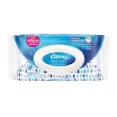1

USPRAY - Travel Friendly Sanitizer Perfectly Fits In Pocket
- Provides complete protection from germs and bacteria
- Lightweight and travel friendly sanitizer
2
ShowerPill Wet Wipes - Premium Ingredient Body Wipe For Post Work-Out
- Phthalate-free individually wrapped wipes
- Reduce the stickiness and bad odour
3
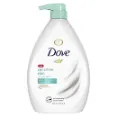
Dove - Dermatologist Recommended Body Wash Keeps Skin Smoother
- Hygiene body wash for women
- Provides soothing for delicate and sensitive skin
- Sulfate-free body wash prevents dryness of skin
4

Vanish - Quick And Effective Pre Wash Stain remover
- Stain remover and detergent bar for clothes
- Pre-wash bar removes stains from fabrics
- Deeply cleanses tough grimes
5

Neutrogena Liquid - Designed In 8 Ounce Fluid Bottle For Longer And More Cleansings
- Dermatologist tested facial cleanser
- Glycerin rich facial cleanser
- Unique facial cleansing formula for clean and soft skin
6

Clearly Natural Soap - Pure And Natural Ingredients Provides Lasting Fragrance All Day
- Unscented glycerin soap offers delightful fragrances
- Protects skin from harmful chemical residues
- Enriched with glycerin keeps refreshed and moisturized
7
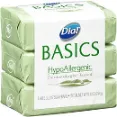
Dial Bar Soap - Antibacterial Soap Kill Bacteria Contaminants On Skin Surface
- Clean rinsing formula makes skin soft and smooth
- Formulated with glycerin for effective skin care
- Antioxidant soap prevents germs and bacteria
8

Dr Bronners - Natural Skin Cleanser Safe For Babies And Children
- Packed with recyclable and biodegradable materials
- Organic hemp oil provides after wash refreshment
- Made with Natural ingredients and organic oils
9

Neutrogena Bar Soap - Rinse Free Cleansing Bar Provides Soothness Afterwash
- Hypoallergenic bar soap for sensitive skin
- Formulated bar for all skin types
- Glycerin rich soap reduces redness and irritations
10

SheaMoisture Charcoal - Naturally Derived Ingredients Minimizes Impurities
- Bamboo charcoal scrub absorbs dirt and impurities
- Body scrub cleans and hydrates troubled skin
- Blended with bamboo charcoal to detoxify and purify skin
11

SheaMoisture Rawshea - Organic Soap Effectively Cleanses Impurities
- Sulfate-free bar soap attracts and retains moisture to skin
- Organic shea soap removes impurities from skin
- Natural bar soap made with cherished essential ingredients
12

SheaMoisture - Nutrient Rich Bar Soap Protects From Skin Allergies
- Specially formulated to absorb dirt and cleanse skin
- Blended with natural ingredients, 100 percent coconut oil
- Activated cleansing soap for body wash
13

GreenVacShop - Premium Quality Filters For Fast And Efficient Cleaning
- Reusable filters and brush rolls for long lasting usage
- Multi Surface brushrolls eradicates stinky messes
- Ultralight floor mop for carpet cleaning
14

BISSELL - Multi Surface Cleaner Vacuums And Washes Floor At Same Time
- Cordless electric mop for floors and rugs
- Two Tank system for fresh water solution and dirty water
- Self cleaning cycle flushes out dirt, pet hair and debris
15
TANGSEN - Cleansing Gel Contains Anti-Fungal Elements To Protect From Infection.
- 24 hours of protections
- Eco-friendly and high-quality ingredients
16

Gladwell - High Powered Dual Spin Motors Quickly Removes Stains From Floors
- Liquid spray and LED light for efficient cleanings in night
- Extendable handle, 180 degree rotation offers flexible cleaning
- Cordless battery operated mop
17

Kleenex Facial Wipes - Dependable Strength & Ultimate Softness
- Frequently clean to improve skin health
- Nourishing moisturizer soft tissue
18
Summer's Eve Wipes - Improve The Quality of Feminine Hygiene With Convenience
- Fruity floral fragrance wiping cloth
- Extract odour causing bugs and microbe
19
Rubbermaid - Disinfectant Spray Provides Personal Hygiene To Washroom Users
- Removes dirt and bacteria from toilet seats
- Quick drying and alcohol based formula for washrooms
20
XANGLO - Alcohol Effectively Destroy Unhygienic Stuff Completely
- Non-irritating moisturized function
- Long-lasting anti-bacterial
21
Purell - Just One Squirt Of Purell Advanced Hand Sanitizer Enough To Destroy Germs
- Advanced hand sanitizer refreshing gel
- Provides protection against the spread of germs
22
PUREFY - Effectively Eliminates Airborne And Surface Odors
- Safe sanitizer spray for kids and elders
- Hygienic and eco-friendly sanitizer
23
Air Wick - Neutralizes Stinky Smell And Provides Pleasant Fragrance
- Essential Toilet sanitizer releases fresh scent
- Innovative air freshener eliminates bacteria and unpleasant odors
24
Rocketed - Disinfectant Gel Keeps Your Hand Moisturized
- Perfect solution for hand-hygiene at home, office
- Protects from infections and diseases
25
Diva Stuff - Alcohol Free Sanitizer Spray For Germ Prevention
- All natural formula designed to fight bacteria
- Anti-bacterial mist eliminates Acne-causing microbes
26
Lennvan - Alcohol Based Hand Sanitizers Quickly Reduce Microbes Without Water
- Non-toxic and Eco-friendly ingredients
- Eliminates 99 % of bacteria and virus
27

Gojo - Hand Sanitizer With Ultra Nourishing Foam Protects From Germs
- Touch-free hand sanitizer dispenser
- Contains vitamin E and B3
28
Rinse-Free - Effective Flushing Free Disinfection Gel With Non-Sticky Formula
- Simple and convenient sanitizing process
- Refreshing and non-sticky hand sanitizer
29
Rocketed - Antibacterial Hand Sanitizer Formula Stops The Spread Of Viruses
- Perfect hand sanitizer for home, office and travelling
- Pocket-friendly design for easy carrying
30
A/N Portable - Advanced Professional Hand Sanitizer With 75% Alcohol Removes Harmful Bacte...
- Effective trehalose and alcohol skincare ingredients
- Quick-drying and long-lasting effect
31
Cloud Island - Baby Wipes Treat Common Irritation
- Absorb excess oil and moisturize the skin
- Plant-based, dermatologist-tested wipes
32
UP&UP Facial Wipes - Thoroughly Scrubbing And Skin Tone Improvement
- In-depth cleansing of makeup and impurities
- Gives the natural and radiant look
33
Cottonelle Flushable Wipes - Septic-Safe Flush Technology
- Wash off odour causing microorganism
- Eco-friendly designed for toilet usage
34
UP&UP Flushable Wipes - Extra Soothing Comfort For Sensitive Skin
- Infused with aloe vera and vitamin E
- Forest stewardship council certified
35

Rollibot - Energy Efficient Cleans Provides Deep Cleaning To Grimiest Floors
- 2 in 1 Electric mop for cleaning and polishing floor
- Rechargeable Li-ion battery provides enough time for cleaning
- Two-button interface for controlling speed and spray
36

ZANheadgear - Stylish Design Mask For Outdoor Activities
- Perfect for chilling morning and windy
- Water and abrasion resistant mask
- Adjustable hook and loop for comfortably wear
37

Frey - Blended With Essential Oils And Natural Ingredients
- Portable fabric spray suitable for outdoors
- Concentrated formula provides world class scent
- Freshener spray blended with essential oils
38

TOPFEN - Protect 95% of Airborne Particles,Fumes And Odors
- Mouth Mask for children and adult
- Extra-soft ear loop to perfectly fit into ears
- Prevent from air pollution and allergens
39

YYaaloa - Anti-dust And Antibacterial Mask For 99.9% Germs Protection
- Soft and breathable mask for comfortable use
- Premium quality mask made with 100% pure cotton
- Protect against vehicle smoke,and sandy airs
40

Coolha - Fashionable Style Print Mask For Eye-Catching Look
- Quality material with fashionable cute print mask
- Stretchy adjustable earloops for comfortable wear
- Perfect for indoor and outdoor activities
41

VTER - Skin-Friendly Design Mask For All Skin Types
- User-Friendly mask for all skin types
- Ideal for camping,hiking ,gardening and travelling
- Better visibility and balance with elastic straps
42
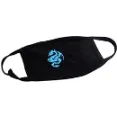
Tyji - Breathable Soft And Lightweight Mask
- Bests for hospital ,public places and households
- Anti-dust mask for protect against viruses ,germs and flu
- Lightweight and comfortable to wear
43
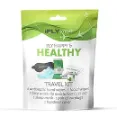
iFLYsmart - Portable And Compact Kit To Easily Fit In Luggage
- All in one Travel Friendly kit for long trip
- Provides antiseptic hand and facial wipes
- Portable and compact to easily fit in luggage
44

Achiou - Protect Face Against UV Rays And Dust With Balaclava
- Perfect for motorcycle riding,skiing and hunting activities
- Moisture absorbing and breathable fabric
- Balaclava sunscreen face mask for UV damages
45

Turbo Microfiber - Unique Looped Fibers Quickly Wipes Tough Messes
- High Grade microfiber mop for all home surfaces
- 360 degree swivel head easily cleans hard to reach areas
- Enhanced cleaning system removes and absorbs dirt
46
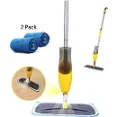
Yocada Microfiber - Scrubber Removal Efficiently Cleans Dirt From Pads
- Adjustable Spray mop efficiently cleans tough dirt and grime
- Ergonomic Handgrip makes cleaning easy and simple
- Reusable microfiber pads prolongs the usage of mop
47

Vapor Fresh - Non-toxic Cleansing Spray Protects Skin From Irritations
- Formulated cleaning spray for sports equipment
- Non toxic and skin friendly deodorizer
- Cleansing spray made with 100% natural ingredients
48

Febreze - Odor Eliminating Technology Removes Stinky Odors From Fabrics
- Offers refreshing scent to fabrics
- Unique deodorizer for hard to clean fabrics
- Instant odor eliminator
49

Diva Stuff - Antiseptic Solution Prevents Acne Causing Bacteria
- Antibacterial mist kills common household bacteria
- Removes stinky odors from carpets, rugs and curtains
- Natural antiseptic for acne treatment
50

WURTH - Professional Cleaning Foam For Glass And Smooth Surfaces
- Streak Proof formula suits all glass surfaces
- Safely cleanses transparent surfaces without scratches
- Provides pleasant after wash fragrance
51

Optix 55 - Individually Wrapped Pre Moistened Wipes For Cleansing On Travel
- Individually wrapped wipes for quick cleaning
- Cleans and prevents fogging on glass surfaces
- Pre-moistened cleansing wipes for lenses
52
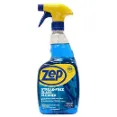
Zep - High Performance Cleansing Spray For Tinted Or Acrylic Glass
- Foaming glass cleaner removes smudges and resists fingerprints
- Hospital grade cleaner dissolves dirt and grease
- Cleanser spray for tinted or acrylic glass
53

SprayWay - Streak-Free Cleanser Makes Glass Surfaces Sparkling Shine
- Formulated spray eliminates tough dirt and grime
- Heavy duty and rinse-free glass cleaner
- Offers fresh fragrance and beautiful shine
54

Invisible Glass - Ergonomic Handle For Cleaning In Hard To Reach Areas
- Flexible tool for glass cleansing
- Foam grip covers hard to reach areas easily
- Multi-purpose cleaner for stubborn messes
55

Puracy - Eco Friendly Cleanser Made From Plants And Water
- Non-toxic and natural all surface cleaner
- Blend of natural ingredients safe for in home use
- Biodegradable multi surface cleaner
56
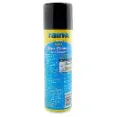
La Rosticceria - Rain Repellent Aerosol Prevents Road Spray And Snow
- Protective spray for windows and glass surfaces
- Helps and prevents windshield from snow, ice, tough grime
- Rain repellent improves driving visibility
57

Hiware - Lightweight Wiper Perfect For Tiles And Fogged Mirrors
- Convenient and quick cleaner for all glass surfaces
- Stainless steel and rust resistant handle
- Effective cleaner for indoor and outdoor use
58

Desired Tools - Dual Edge Blades Ensures Scratch Free Cleansings
- All purpose squeegee cleaner
- Interchangeable blade offers more convenience
- Adjustable handle for quick and efficient cleaning
59

Live Luv Lavish - Natural Cleansing Spray For Fabrics And Furniture
- All natural disinfectant spray eliminates allergens
- Fabric deodorizer minimizes odors
- Effective Cleanser for all household furniture
60

VENETIO - 360 Degree Rotation Joint Allows Offers More Convenience To Operate
- Premium spray mop absorbs dust and dirt particles
- Anti Slip grip and lightweight mop safe for all type of floors
- Self adhesive hook can easily hang after use
61

Zep - Industrial Strength Glass Cleaner For Commercial Tinted Glass
- Concentrated cleaner for heavy glass cleanings
- Professional Glass cleaner for commercial usage
- Ammonia-free cleaner safe for hard non porous surfaces
62

Temples Pride - 18 Inch Base Pads Cleans More Area In One Sweep
- Professional Microfiber mop for hard tiles and stone floors
- Easy to put-on, take off pads with hook and loop strips
- Quick to adjust handle reduces strain
63
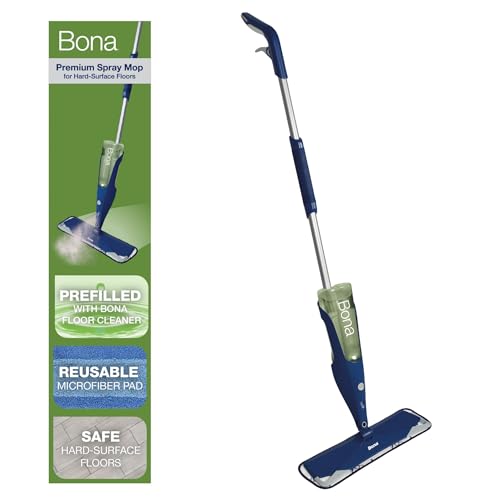
Bona Stone - All In One Spray Mop Effectively Cleans All Hard floor Surfaces
- Sturdy handle with trigger for spraying
- Refillable cartridge and washable cleaning pad offers convenience
- Durable, lightweight design with flexible corners
64

Holibetry - Anti-Fog DustProof Mask For Air-Pollution
- Water-resistance design masks
- Wellsuited for mens and womens
- Anti Dust and anti-poison mask to protect from harmful ash
65
Clorox - Automatically Cleans And Fumigates Your Toilet
- Active shield technology for non-sticky layer
- Sanitized and deodorized with lavender scent
66
Clorox - Antibacterial Wipes For Removing Germs And Messes
- Bleach free wipes for Multi-surface cleaning
- Pacific breeze and coconut fragrance for delightful ambience
67
Clorox Bleach - Kills Harmful Clostridium Difficile Bacteria
- Eradicate pathogenic bacteria in 1minute
- Composition of vinyl chemical Sodium hypochlorite solution
68
Lysol - Active Shield Technology Repels Stains Longer
- Comes with active-shield technology repels stains
- Effectively cleans at hard-to-reach areas
69
Anti3 Protect Series - Purify And Deodorize Surface From Virus And Bacteria
- Eliminates odour causing virus and bacteria
- Deodorized equipment for mats and heavy bags
70
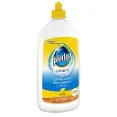
Pledge - Gently Removes Dirt And Grime From Hardwood Floors
- Spotless cleaning of wooden floors
- Provides refreshing lemon scent
71
Woolite - Unique Penetrating Operation For Allergens And Bacteria
- All-in-one for cleaning, freshness and eliminating
- Advanced technology for deep down performance
72
SaniDate - Versatility Function For Sanitizing Vessels And Surface Cleaning
- Perfect for cleaning all surfaces and appliance
- Bleach, chlorine and ammonia-free liquid
73
clorox - Destroys 99.9% Germs And Harmful Bacteria
- Quick cleaning of Stubborn stains
- Ideals for schools, kitchens and commercial places
74
Dial - Get Sanitized With Convenient Liquid Soap
- Liquid antibacterial hand soap
- Antibacterial protection fragrance-free sanitizer
75

Aooba - Fashionable Protective Mask Perfect For Daily Wear
- Suitable for kids, teens, men, and women
- Windproof face mask protects against smoke, dust, ash
76
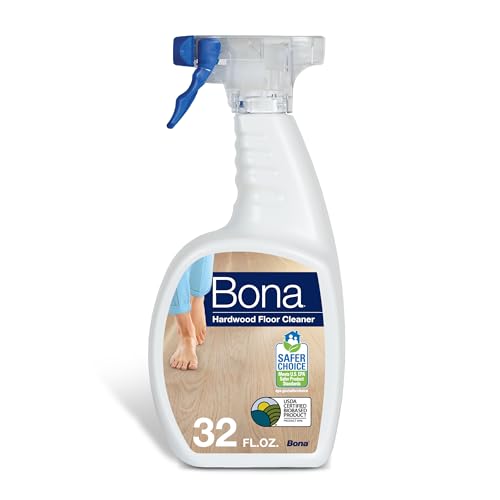
Bona - One-Stop Solution For House Cleaning
- Suitable for unwaxed, polyurethane finished wood floors
- Low VOC emissions
77

Bona - Splashless Technology For A Quick Cleaning
- Splashless technology ensures smooth cleaning
- Maintains pH neutral to protect from discoloration
78

Medpride - Enhanced With Skincare Formula
- Skin cleansing, makeup removal, pet care
- Dispenser with double seal and flip-top for accessibility
79

Wet Ones - Pediatrician Tested Wipes With Hypoallergenic And Paraben-Free
- 0.3% of benzethonium chloride
- Best anti-bacterial wipes for everyday usage
80
Olivia Care -Cruelty Free And Hypoallergenic Liquid Soap
- Infused with sustainable palm oil, olive, and lavender
- Kills bacteria, germs, and other harmful contaminants
81

Medline - Super Soft, PH Balanced And Disposable Clothes
- Benzalkonium Chloride kill harmful pathogens
- Ideal to use at room temperatures
82
Aniwon - High Adjustable Earloop And Nose Bridge
- Washable and reusable anti-pollution mask
- Nose bridge design mechanism
83
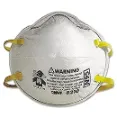
3M - Exhalation Valve Reduces Heat Buildup
- NIOSH approved respirator mask
- 3M cool flow exhalation valve
84
Sunvito - Military Grade Filtration Efficiency
- Military-grade filtration efficiency
- Ultra-lightweight and compact design dust mask
85
Fist Bump - Stretchy Adjustable Earloops For Easy Wear
- Reusable and washable anti-dust mouth mask
- Stretchable earloops for comfy wearing
86
MCR Medical - Latex Free Rescue Mask Makes Resuscitation Safer
- Pair of gloves and an antiseptic wipe
- Features one-way filter valve and elastic head strap
87
Meanhoo - Unique Ventilation Design For Smooth Breathing
- Versatile design with 42 holes
- Wind and dust-proof pollution mask
88

Medline - Aloe Enriched Wipes Moisturizes Everyday
- Hypoallergenic, fragrance-free, and alcohol-free wipes
- Formulated with aloe for soothing skin
89
Strylin - Respirator With Breath Valve To Protect From Toxic Gases
- Machine washable dust mask
- Breathing valve with a double-layer filtration
90

WaterWipes - Made Of 99.9% Pure Water And A Drop Of Fruit Extract
- New cutting-edge technology to grab messes
- Approved by National Eczema Association of America
91
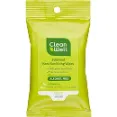
CleanWell - Plenty Of Aloe To Keep All Types Of Skin Moistened
- Flexible to use on hands, face, and other body parts
- No Benzalkonium Chloride, Parabens, and Triclosan chemicals
92

FitRight - Pre Moistened With Aloe Cleansing Formula
- Aloe-based cleansing formula to moisturize and soothe skin
- Easy to carry fragrance-free wipes
93
Norwex - Gel’s Deep Penetration For Effective Cleaning And Descaling
- Phosphate-free, biodegradable ingredients
- Turns porcelain, tubs, tile, and floors to a sparkling shine
94
Kaboom Foam - Oxiclean Stain Fighting Bubbles Provides Light Fresh Scent
- Made of oxiclean and citrus
- Best cost-efficient foam bathroom cleaner
95
Instant Power - Instantly Removes All Deposits And Stains
- Powerful toilet bowl cleaner
- Removes all deposits and stains instantly
96
Kaboom - Simply Brush And Flush To Make Your Toilet Crystal Clean
- Changes purple to green color after rinsing
- Best toilet bowl cleaner gel
97
Professor Amos Fast - New Color Changing Technology Has Upto 24 Applications
- Features color changing technology
- Cleans and deodorizes the home interiors
98
Zep Acidic - Acid Gel Formula Enables To Remove Most Stubborn Stains
- Prevents rust, discolouration, and hard water residue
- Best cleaning solution for food appliances, vehicles
99
Green Works - High Standards Of Cleaning Efficiency And Bio-Degradable Content
- Best eco-friendly multi-surface cleaner
- Liquidates bacterial growth in kitchen and bathroom
100
Puracy Natural - Made From Plant-Powered Ingredients
- Green tea and lime natural ingredients
- Best all-purpose natural cleaner for household
101
Better Life - 100% Natural Made From Soap Bark, Corn And Coconut
- Derived from coconut and corn
- Cleans walls, upholstery, toilet, cars, floors
102
Lysol - Thick Formula Gel For Repelling Stains
- Active shield technology for non-sticky layer
- Sanitized and deodorized with lavender scent
103

Oars + Alps - Cooling Wipe With Anti Blue Ice Crystals And Caffeine
- TSA-approved face and body sanitizer wipes
- Unsweat yourself with blue ice crystals, menthol, and caffeine content
104

HMK Stone Care - 1 Liter Unit Cleans Upto 8000Sq.ft
- Formulated to use on marbles, granites, and other stone surfaces
- Spray and wipe for a gleaming clean surface
105
One With Nature -Treats Psoriasis, Eczmea, And Other Skin Conditions
- Rich in calcium, magnesium, potassium, and bromide
- Treats acne, eczema, psoriasis, and anti-ageing
106
Everyone - Mild Liquid Soap With No Synthetic Fragrances
- Blend of lavender and orange essential oils
- Non-GMO, gluten-free, and no synthetic fragrance
107
Dial - Awakens Your Senses With Moisturizing Rich Lather
- Kills bacteria, and other dreadful chemicals
- Clean, fresh, and hydrated skin after every wash
108
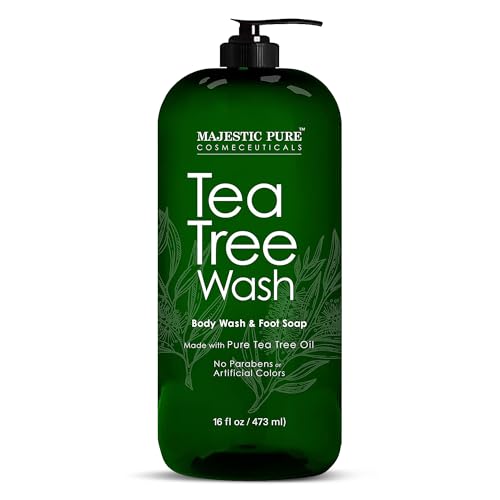
Majestic Pure - Beneficial Ingredients For Skin And Foot Irritations
- Highly rich in skin conditioning ingredients
- No parabens and no artificial colors
109
Cetaphil - Bar Soap Supports All Skin Types
- Suitable for everyday use
- Non-comedogenic, anti-bacterial soap
110
Autobestown - Suitable To Use In Car, Office, Home
- Vanishes microorganisms without causing irritations
- Used in home, office, and commercial places
111
Dial - Features Antibacterial Deodorant Protection Technology
- Hydrating formula wipes out bacteria without drying skin
- Pure, fresh, and long-lasting deodorant protection
112
Simplehuman - Naturally Derived Moisturizing Liquid Soap
- No clogging with the sensor pumps
- Biodegradable, hypoallergenic, and sulfate-free liquid soap
113

Trueremedy - Tri Combo Of Tea Tree, Aloe, And Mint Flavors
- Body odour, fungus, bacteria eliminator
- Fight against skin irritations, hands, foot, and elbow
114

Aunt Fannies - Combo Of Eucalyptus And Vinegar Wash Concentrate
- Eucalyptus and vinegar combo floor cleaner
- Preferred to use on bamboo, ceramic tiles, and hardwood floors
115

Yoodelife - Anti-Dust, Anti-Odor Face Mask At Affordable Pricing
- Black cotton face mask protects from debris, bad odors
- Stylishly designed for both men and women
116

BeatBasic - Adjustable Nose Bridge Wire Prevents Dust
- Suitable for children above 12years of age
- Advanced activated carbon filter mouth mask
117
Yamanni Rocketed - Made From Aloe Vera Extract To Keep Wipes Wet
- Made of hypoallergenic ingredients
- Easy to pull-out option for convenient access
118
CIKIShield - Breathable Cotton Material Protects from Dust, Pollution, Smoke
- Protects against dust, pollen, harmful pollutants
- Breathable cotton material kids mask
119
Aniwon - M-Shaped Nose Clip For Comfortable Fit
- Deters dust, chemicals, and PM2.5 particles
- Stretchy earloops for a comfortable wear
120

Babyganics - Non-Allergenic, Alcohol Free Foaming And Dermatologist Tested
- Alcohol-free plant-based wipes for babies
- Absolutely free from parabens, sulfates, and artificial fragrances
121
Pokonboy - Durable ABS Plastic Material Protects Eyes, Nose
- Suitable for kids above 6+years
- Face mask made of ABS plastic material
122

DETCO - Kills Enzymes And Bacteria
- Simple and fast dispensing of cleaning solution
- General mopping and heavily soiled surfaces
123
Whygo - Fashion And Creatively Designed Face Mask
- Round the clock customer support services
- Made of high-quality cotton material
124
Xshelley - Soft And Breathable Face Mask To Deter Bacteria, Germs
- Flexible to carry - aeroplane, public places
- Wearable eco-friendly masks for boys and girls
125
Onegoodcar - Durable Dust Mask For Everyday Use
- Double layer stereoscopic filter
- Skin-friendly sponge material face mask
126
Wallner - Full Width Nose Piece Ensures Safety From Viruses
- Made of 3-layered activated non-woven filter
- Wipes out bacteria, dust, pollen, and smoke
127

Zep - Effectively Cleans Hard Surface Interiors
- Hassle-free cleaning on multi-surface floors
- Works well on linoleum, ceramic, wood, and marbles
128

Hallmark Floors - Specially Designed With Nourishing Properties To Clean
- Closes the hardwood floor pores to protect against dirt
- Makes you feel relaxed and cozy with sparkling residential floors
129

IncStores - Well Suited For Virgin And Recycled Rubber Floors
- Well-suited for virgin and recycled rubber flooring
- Budget-friendly floor cleaner
130

ProCare - Eco-Friendly And Biodegradable Liquid Solution
- Made of eco-friendly and bio-degradable chemicals
- Citrus aroma enhances floor beauty
131

SharkNinja - Suitable To Use On Oil-Finished Wood Floors
- Non-toxic and Biodegradable cleanser
- Eliminates the harmful chemicals, bacteria stuck on carpets
132
Whoosh - Non-toxic Cleaner Designed To Resist Fingerprints
- 100% natural, Non-toxic spray
- Provides invisible coating and resistance to fingerprints
133
Tech Armor - Pro-Cleaning Kit Provides Maximum Care For Electronic Devices
- Pre-moistened tissues wipes off stubborn particles and greasy fingerprints
- Tech-gel formula safe for all electronic devices
134
Koala - Formulated To Use On Any Digital Screen
- 16 ounces spray cleaner comes for long term use
- Anti reflective coating increases viewability
135
Screen Mom - Perfect Cleaning Solution For Sensitive Surfaces
- Contains 2oz spray bottle, 1 purple microfiber cloth
- Perfect for cleaning LED, OLED, Plasma Tv’s
136
Screen Mom - Natural Screen Cleaner Increases Life Span Of Gadgets
- Premium cleaner kit for expensive electronics
- Easily cleans smudges, fingerprints debris from screens
137
Usefulthingy - Cleaning Kit Improves Devices Touch Sensitivity
- Aerosol solution spray effectively cleans dirt on displays
- Formulated to clean fingerprints, dust, smudges
138
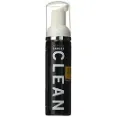
Techn Discounters - Zaggfoam Spray Makes Electronic Displays Sparkling Clean
- Zaggfoam prevents buildup of skin oils on gadgets
- Antibacterial cleaner keeps gadgets sparkling clean
139
Tox - Anti-damage Coating Protects Devices From Discolouration
- Anti UV protective coating provides sheild against fading
- Bubble cleaner keeps gadgets clean and spotless
140
Bayes - Eco-responsible Cleaner Avoids Dirt, Fingerprints
- Designed to polish and protect electronic displays
- Antibacterial microfiber cloth for polishing and cleaning screens
141

Method Lights - Removes Scuff Marks In Few Minutes
- Best for laminated and sealed hardwood floors
- Bio-degradable, no wax wooden floor cleaner
142
Renuzit Snuggle - Renuzit Snuggle Provides Refreshing Scent Throughout Home
- Fabric refresher with odor eliminating technology
- Provides long lasting fragrance
143

Liv Luv Lavish - Highly Effective Ingredients Eliminates Bacteria And Dust Mites
- Protects children from infection causing germs and fungus
- Deodorizer and disinfectant for all fabrics
144
Simple Solution - Enzyme Formula Cleans Up Pet Made Odors
- Multi surface Cleaner works on all home furniture
- Safest way to clean up organic stains and odors
145
Simple Green - Concentrated Cleaner Removes Built Up Dirt And Grease
- Biodegradable formula easily removes tough dirt and grime
- Safer to use on all washable surfaces
146
Gadget Guard - Antibacterial Fiber Cloth Eliminates Dust and Smudges
- Prevents smudges and keeps screen germ-free
- Eco-friendly screen and gaurd cleaner
147

Black Diamond - Pet And Children Friendly Ingredients
- Quickly removes food, oil and beverages spills
- Triple action poly shield for streak-free cleanings
148
Pledge - Best Squirt And Mop Pledge Floor Cleaner
- Leaves classic pledge lemon scent
- Best for finished and sealed surfaces
149

Bruce - Get complete Sanitize Your Wooden Floor
- Simplicity and convenience design with trigger spray
- Perfect for hardwood and laminate floorings
150

Quick Shine - Restores Richness And Finish For Luxurious Looking
- Added durability for heavy foot traffic
- Zero residual floor cleaners for a quick shine
151

Bona - Maintains Floor Finish With Neutral PH Value
- Splashless technology for a smoother pour
- Pet-friendly cleaner with very low VOC emissions
152
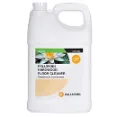
Pallmann - Residual Free Refreshing Lemon Scent
- Makes 8 gallons of ready to use liquid with a lemon scent
- Non-toxic and Neutral PH water-based formula
153

Mop & Glo - The Long-Lasting Refreshing Mint Scent
- Perfect for marble, vinyl, tiles and ceramic floors
- Multi-surface floor cleaner with the citrus scent
154

Bona - Bio-Degradable And Pets Friendly Product
- Best for unoiled and polyurethane wooden floors
- GREENGUARD GOLD certified product
155
Clorox Fabric Sanitizer - Disinfecting Bio Stain Remover For Hard Home Surfaces
- Pre-treat spray kills all the odor causing bacteria
- Smart tube technology for better cleaning experience
156
Rocco And Roxie - Professional Strength Formula Removes Organic Spills And Feces
- Professional Strength formula tackles all organic spills
- Natural enzymatic bacteria actively eliminates stinky stains
157
Sweat X Sport - Anti-Stink Spray Removes Body Odor Stench From Clothes
- Specially formulated for odor stench and bacteria
- Multipurpose Non-toxic odor eleminator
158
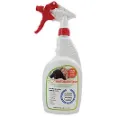
Micro Balance - Botanical Spray Cleaner Eliminates Mold Spores In Fabrics
- Designed to maintain healthy mold-free environment
- Lab-tested blend works on mold spores and toxins
159
RMR - Disinfectant Formula Inhibits Growth Of Household Bacteria
- Fungicide cleaner for residential and commercial use
- Disinfectant spray eliminates bacteria in home fabrics
160

Woolite Advanced - Sanitizes Easily With Powerful Triple Action Cleaning System
- All in formula eliminates allergens on soft surfaces
- Unique penetrating action deeply cleans carpet fibers
161

Kahrs - Get Rinse Free Multi-Surface Cleanings
- Perfect for unwaxed polyurethane and hardwood floors
- Ready to use spray for effective cleaning
162
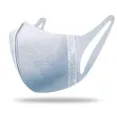
SPVISE - Effectively Block Germs,dust and droplet with 3 layer filtration mask
- Elastic soft band to cover ear ,mouth , and chin
- Multilayer filtration mask to prevent viruses and flu
"Amazon, Amazon Prime, the Amazon logo and Amazon Prime logo are trademarks of Amazon.com, Inc. or its affiliates". AS AN AMAZON ASSOCIATE, WE EARN AFFILIATE COMMISSIONS FROM QUALIFYING PURCHASES.
Quick Summary
🏆 Best Overall: USPRAY - Travel Friendly Sanitizer Perfe... | ⭐ Runner Up: ShowerPill Wet Wipes - Premium Ingredien... | 💰 Also Great: Dove - Dermatologist Recommended Body Wa...
JUMP TO [Show]
How To Fight Against Coronavirus - COVID-19?
Coronavirus are a large family of respiratory viruses that can cause mild to moderate or severe illness from the common cold to respiratory syndromes. They are so-called because of the crown-shaped tips on their surface (Corona means Crown) and quite common in many animal species. Adding up, they can evolve and infect humans and then spread to the population.
OMS has reported that growing evidence demonstrates the link between SARS-CoV2 and other similar viruses circulating in bats, more precisely the subspecies of Rhinolophus bats. These subspecies are abundant and widely present in southern China, Asia, Middle East, Africa, and Europe. Recent studies have indicated that over 500CoV have been identified and the transmission route to humans remains unclear. Bats are rare in Chinese markets; they are hunted and sold directly to restaurants. The most probable current hypothesis is that an intermediate animal, yet to be identified, played a role in transmission.
Human coronavirus are known to date, common all over the world, are seven, some identified several years ago (some in the early-mid-1960s) and others identified in the new millennium. The symptoms of this new pathology are: fever and flu-like symptoms such as cough, sore throat, breathing difficulties, muscle pain, fatigue are signs of possible new coronavirus infection. We have to be careful when we talk about symptoms; although it is true that we know the signs of this pathology it is also true that some people are infected but do not develop any symptoms. This eventually makes everything much more problematic.
Most confirmed cases, particularly children and young adults, appear to have a mild flu-like illness and a slow onset. They are not careful enough towards health and hygiene while using the washroom. About 20% seem to be progressing towards a more severe disease: pneumonia, severe acute respiratory failure, renal failure and in some cases, death. The people most at risk of contracting severe forms of this disease are the elderly and those with other conditions such as hypertension, heart problems or diabetes, and immune-suppressed patients; for reducing these problems, opt for the best rubbermaid toilet seat sanitizer and xanglo hand sanitizer to live healthy life.
Those who have travelled to the areas of interest of the virus and those who have been in contact with infected persons must be careful and stay in quarantine. Healthcare workers may also be at higher risk of contracting the disease because they come into contact with patients more often than the general population.
In understanding whether the infection has taken place or not, we must evaluate the incubation period: that is, the period of time between infection and the development of clinical symptoms. Through studies and research, the European Center for Disease Prevention and Control (ECDC) has found that its incubation spans between 2 and 12 days, up to a maximum of 14 days. This implies that the territorially competent health authorities must apply to the close contacts of a probable or confirmed case the measure of the quarantine with active surveillance, for fourteen days.
The new Coronavirus responsible for respiratory disease COVID-19 can also be transmitted from person to person with a probable or confirmed cases like saliva, cough, sneezing, direct personal contacts through hands. Usually, respiratory diseases are not transmitted with food, which in any case must be managed in compliance with good hygiene practices and avoiding contact between raw and cooked food. If you are infected, it is advisable to call your family doctor/pediatrician and take the preventive measures.
Being a new disease, there is still no vaccine and to make one ad hoc the times can also be relatively long (it is estimated 12-18 months). Since effective antiviral therapy is currently unknown, the WHO research and development area is conducting a systematic review to evaluate potential treatments and develop clinical protocols.
Currently, there are no therapies recommended by the World Health Organization for the new Coronavirus, and only supportive therapies are indicated in the patient care guidelines, such as oxygen therapy, fluid administration and practical use. Antibiotics for the treatment of any bacterial co-infections. On some patients, however, some drugs are already in use or tested for other diseases, while for others, preclinical tests have been started in view of possible use.
On February 18, the ISS reports that the Chinese clinical trial registry has announced the launch of a clinical trial with chloroquine (a proven antimalarial effective in vitro and on animal models against numerous viruses including coronavirus SARS) and lopinavir and the first results regarding the drug seem encouraging.
Being a respiratory virus that spreads mainly through the droplets of the breath of infected people, when, e.g. they sneeze or cough or blow their nose, the infection may survive a few hours on surfaces but studies are still ongoing. "It is absolutely possible that the droplets of saliva falling on some surfaces of our family environments rather than working for some time may have inside them cells that house the virus, but this mode of contagion is absolutely marginal compared to inter-human contagion; therefore, it is preferred not to introduce clothes or shoes used outdoors and keep the surfaces clean. The use of simple disinfectants is able to kill the virus by cancelling its ability to infect people, for example, disinfectants containing 75% alcohol (ethanol) or 1% chlorine-based (bleach). It is also necessary to always disinfect frequently used objects (mobile phone, earphones, microphone) with a cloth moistened with alcohol-based products or bleach.
Recent studies to find effective solutions have shown that these coronavirus are effectively deactivated by surface disinfection procedures, in about 1 minute, with ethanol at concentrations between 62-71%, with 0.5% hydrogen peroxide, or with 0.1% sodium hypochlorite. Other biocidal agents such as 0.05-0.2% quaternary ammonium, or 0.02% chlorhexidine digluconate were less active.
Frequent contamination of surfaces in the healthcare sector, therefore, represents a potential source of viral transmission even if data on the transmissibility of coronaviruses from contaminated surfaces to the hands are not yet available. At the moment the viral load of coronaviruses on inanimate surfaces is not known but, in an epidemic situation, to reduce the spread of this virus, it is essential to decrease the viral load on surfaces by disinfection, in particular of the surfaces frequently touched by patients where they can concentrate the maximum viral load.
OMS recommends ensuring that environmental cleaning and disinfection procedures are carried out consistently and correctly. Thorough cleaning of environmental surfaces with water and detergent and the use of commonly used hospital disinfectants (sodium hypochlorite) are valid and sufficient procedures. So before touching something, it's better to wash your hands for at least 30 seconds with an alcoholic gel or soap and water. Consumption of raw or undercooked animal products should be avoided. In general, coronaviruses are thermolabile, which means that they are sensitive to normal cooking temperatures. Raw meat, raw milk or animal organs must be handled with care to avoid cross-contamination.
It is safe to drink tap water, in fact, purification practices are effective in killing viruses, together with environmental conditions that compromise the viability of microorganisms (temperature, sunlight, high pH levels) and the final disinfection phase.
At the moment, there is no scientific evidence that pets, such as dogs and cats, have contracted the infection or can spread it. After contact with animals, however, it is recommended to wash your hands often with soap and water, or using alcoholic solutions, For purely precautionary purposes, the United States Center for Disease Control suggests that infected people limit contact with animals, similarly to what is done with other people in the household, for example by avoiding kisses or sharing food.
Even masks help, having one is better than not having it! The masks do not guarantee absolute protection from the Coronavirus, which can also be transmitted through contact with the eyes and which can pass through common anti-smog or surgical masks.
Some types of masks, however, are more effective than others: these are PPE (personal protective equipment) FFP2 and FFP3 compliant with the EN 149 standard, with valid CE marking followed by the number of the control body that authorizes their marketing. FFP2 and FFP3 have a filtering efficiency of 92% and 98% respectively. So be careful to wear the mask correctly, without leaving spaces on the edges and covering the face up to the chin (Also, do not touch the front and back, i.e. the filter, but only the support elastic). Don t forget to wash your hands before and after wearing them.
On December 31, 2019, the Wuhan Municipal Health Commission (China) reported a cluster of pneumonia cases of unknown etiology to the World Health Organization in the city of Wuhan, in the Chinese province of Hubei. On January 9, 2020, the Chinese CDC reported that a new coronavirus (SARS-CoV-2) was identified as the causative agent of respiratory disease later called Covid-19. China immediately made public the genomic sequence that allowed a diagnostic test to be carried out in a timely manner.
On January 30, OMS declared the Coronavirus epidemic in China. International public health emergency. The WHO raised the threat to the coronavirus epidemic to the world level "very high" on February 28, 2020. In March 11 2020, OMS Director-General Tedros Adhanom Ghebreyesus called the spread of Covid-19 no longer an epidemic confined to some geographical regions, but a pandemic spread all over the planet.
On March 13, OMS stated that Europe is becoming the new epicentre of the pandemic. The number of Covid-19 cases reported in the EU and the United Kingdom has increased very rapidly in several countries in the past ten days, reflecting the trends observed in China between January-early February and Northern Italy in late February.
The risk associated with COVID-19 infection for people in Europe is currently considered moderate for the general population, but high for the elderly and individuals with chronic diseases. The Covid-19 transmission in healthcare facilities is high, in the absence of early diagnosis and highly effective infection control.
It is only recently that this virus appeared from a precise point in the world, and now he is in the whole world and is changing our lives, our daily life even without our direct contact is one of those times that we all feel close without any distinction in a virtual embrace and wait for everything to come back as before and for virtual to come back real. The world is coming together in a single fear with the hope that everything will return a bit as before maybe more fraternal first and wiser than before.
The progress of science and technology has accustomed us to live thinking about the future, but at this moment as individuals and as a community, we are suspended in the present time. Because no artificial intelligence predictive algorithm will be able to tell us how the spread of Coronavirus will evolve. In the initial phase of the spread of an epidemic, when there is still insufficient data, researchers rely on mathematical methods that can predict how the situation will develop for infected people and how likely they are to transmit the virus, according to current estimates, each infected person can infect at least two people, who in turn infect as many people.
But, there are two other unknown elements that increase the complexity of the study of the phenomenon: the lack of symptoms or their presence in a mild form. What we do not know about this epidemic is how many people contract the disease without symptoms or with signs so modest as to do not contact a healthcare facility. And this makes any future forecast indefinite. The difficulty of making predictions, therefore, is due to the lack of sufficient information, typical of a new virus. To protect from the unhygienic environment in public places, you must carry the best uspray toilet seat sanitizer because; it's common to use bathroom when we out for long time.
Coronavirus Prevention Essentials
Frequently Asked Questions
What are the coronavirus prevention essentials?
Based on our extensive research and customer ratings, the top picks include USPRAY - Travel Friendly Sanit, ShowerPill Wet Wipes - Premium, Dove - Dermatologist Recommend. We evaluated 179 options to bring you the best recommendations.
Why is USPRAY - Travel Friendly Sanitizer Perfe ranked #1?
USPRAY - Travel Friendly Sanitizer Perfe earned the top spot based on customer ratings, value for money, and overall quality. Our team evaluated multiple factors to determine this ranking.
How do we choose the coronavirus prevention essentials?
Our team evaluates products based on customer reviews, features, pricing, brand reputation, and real-world performance. We regularly update our rankings to reflect the latest market changes.
How often is this list updated?
This list was last updated on August 11, 2022. We continuously monitor the market and update our recommendations as new products launch or existing ones change.













